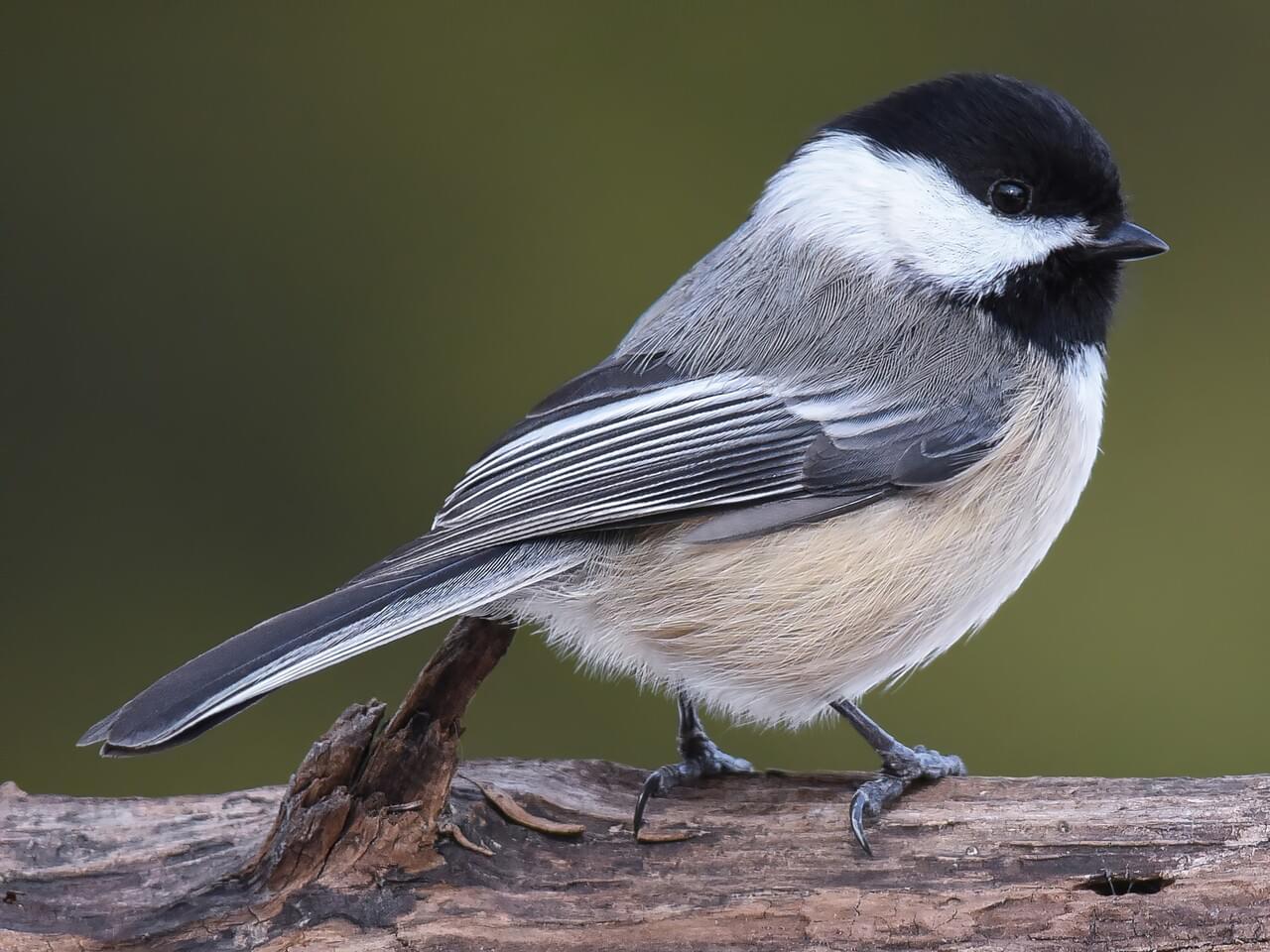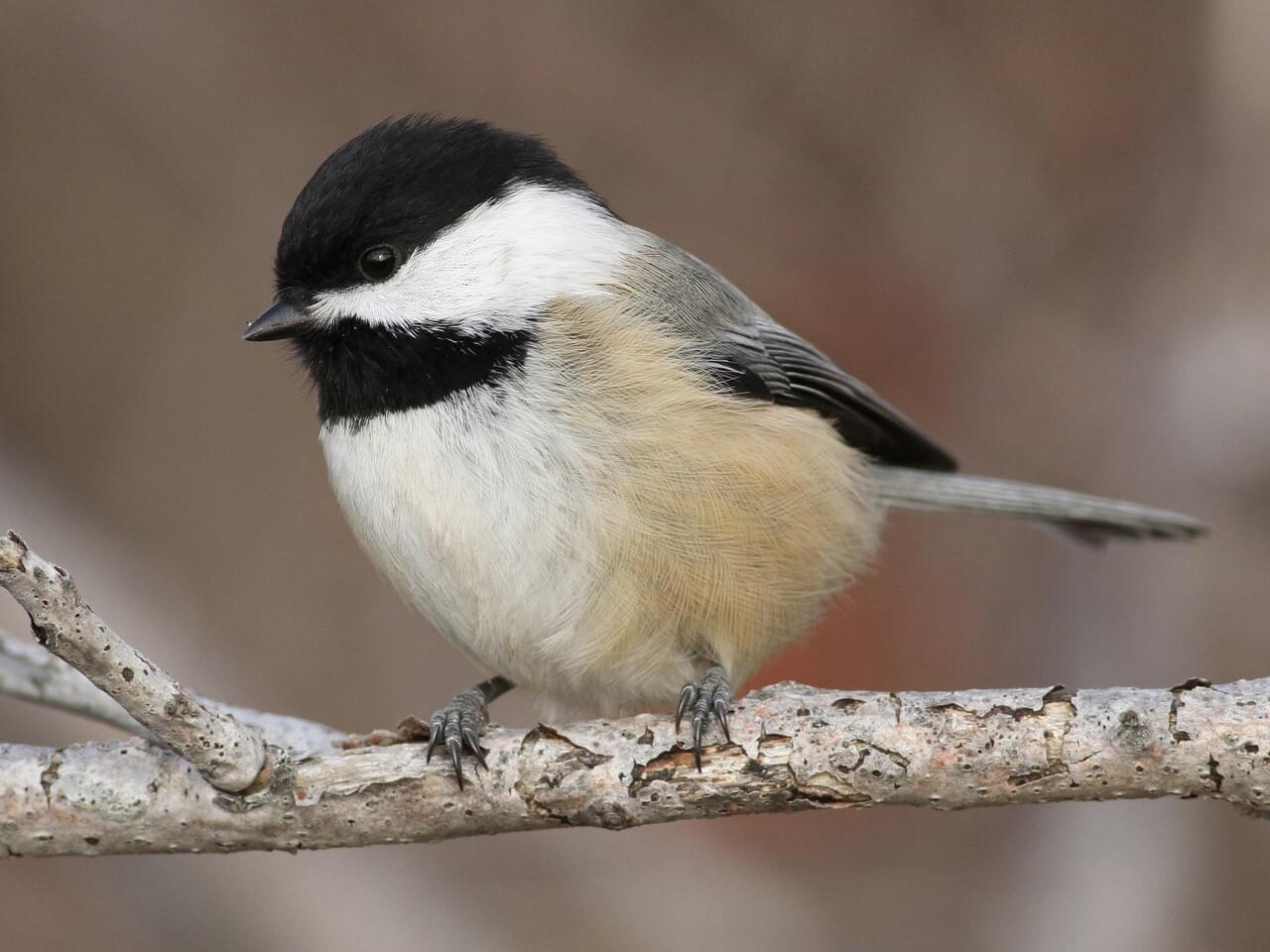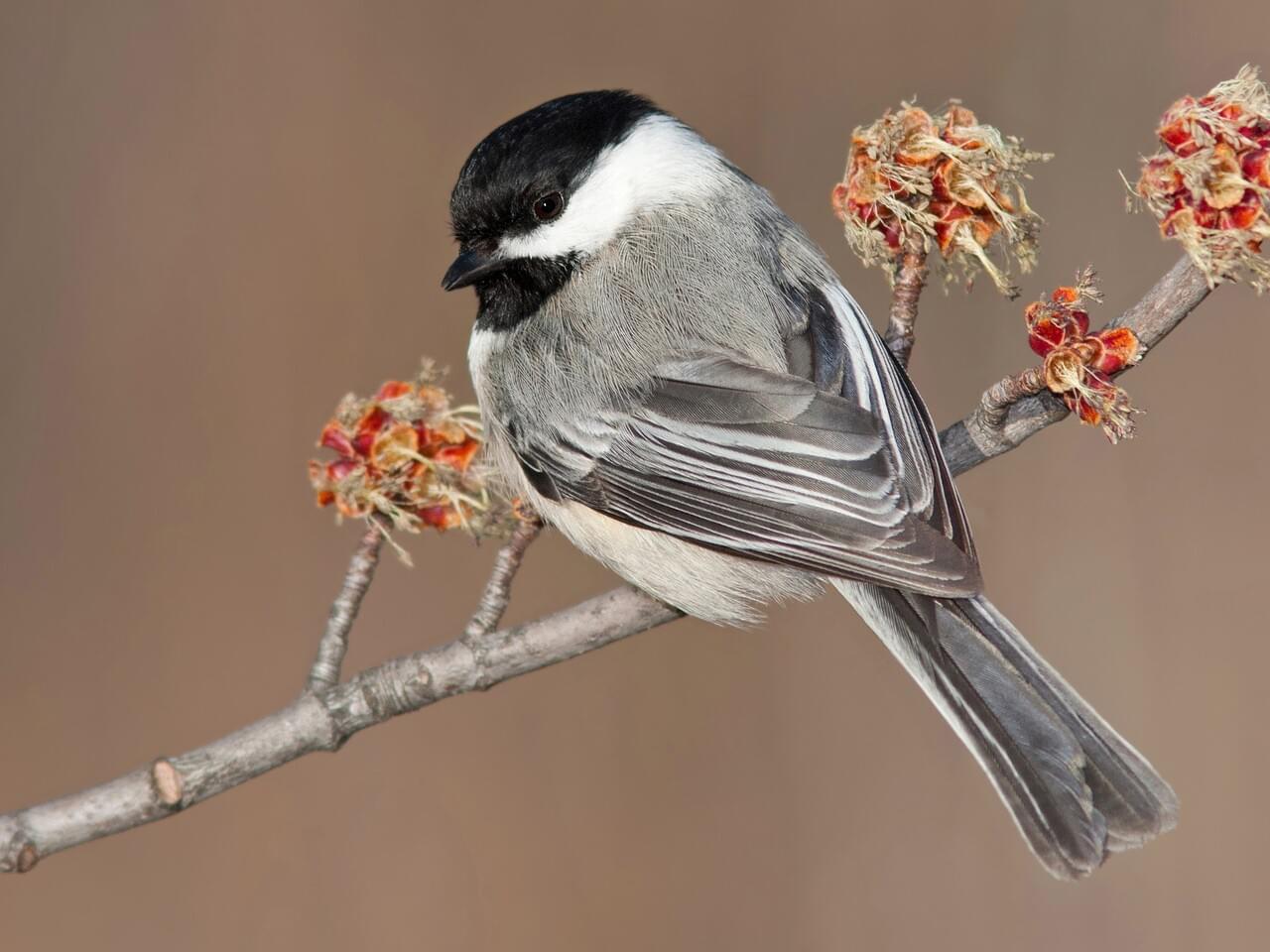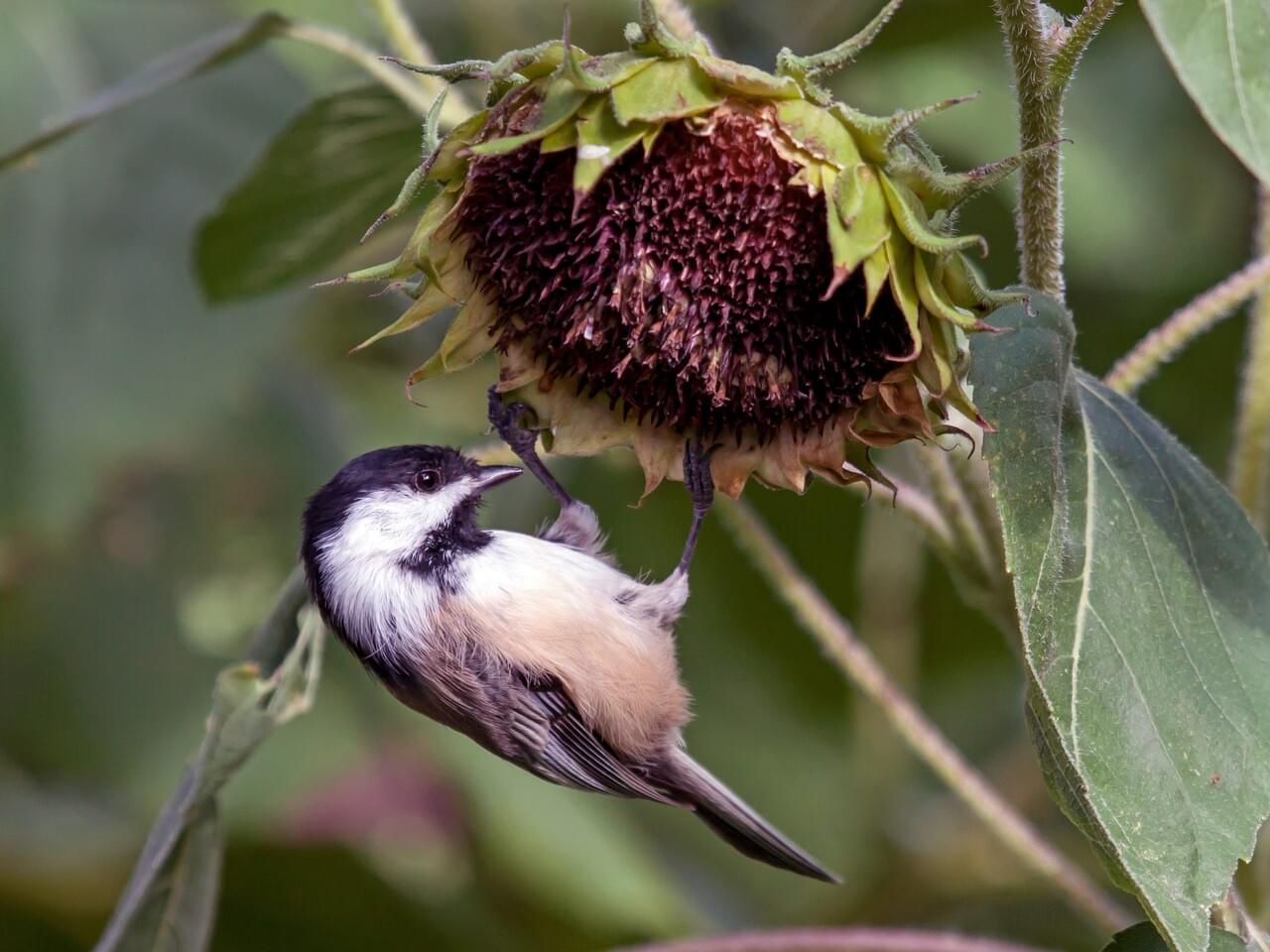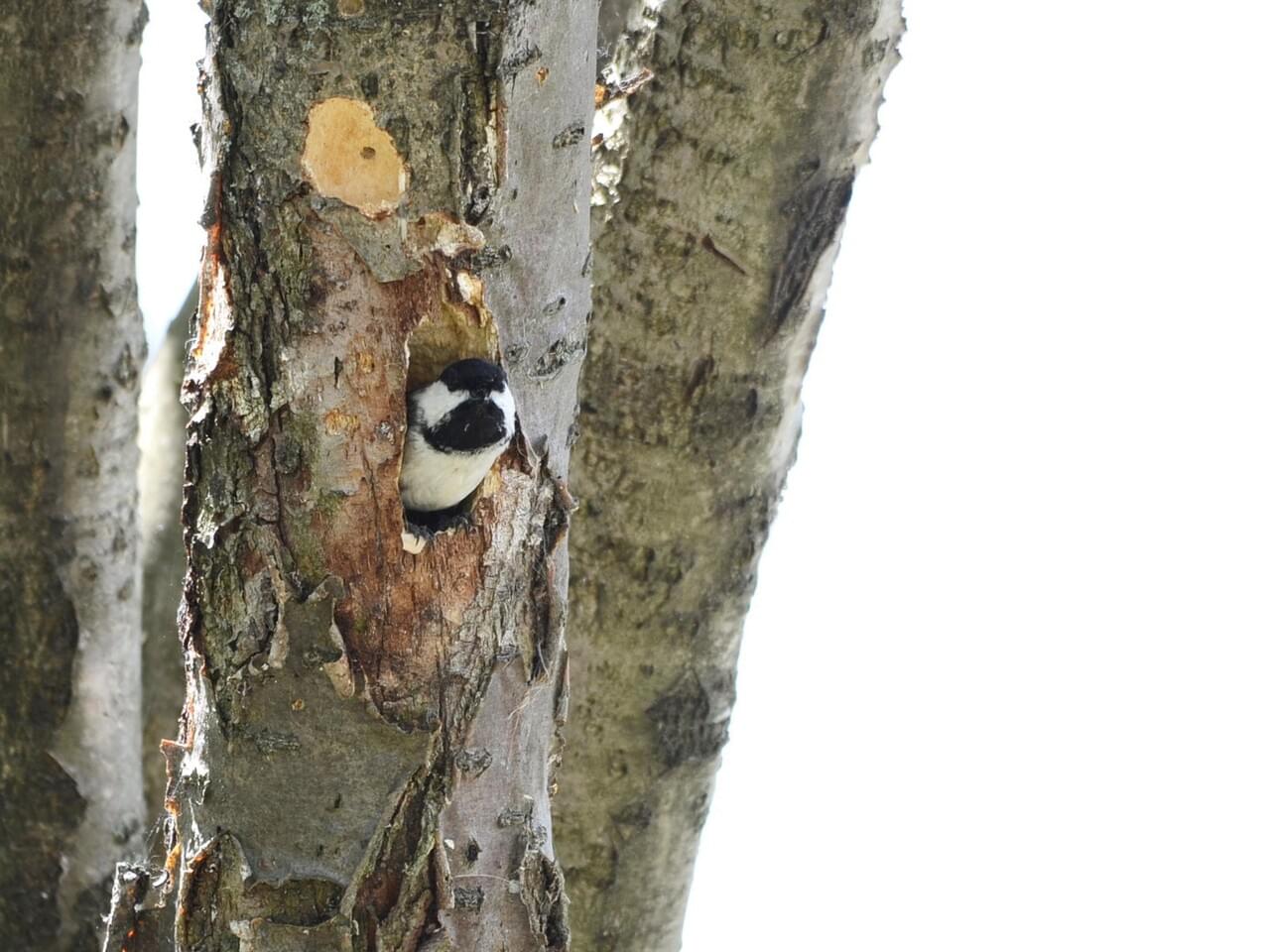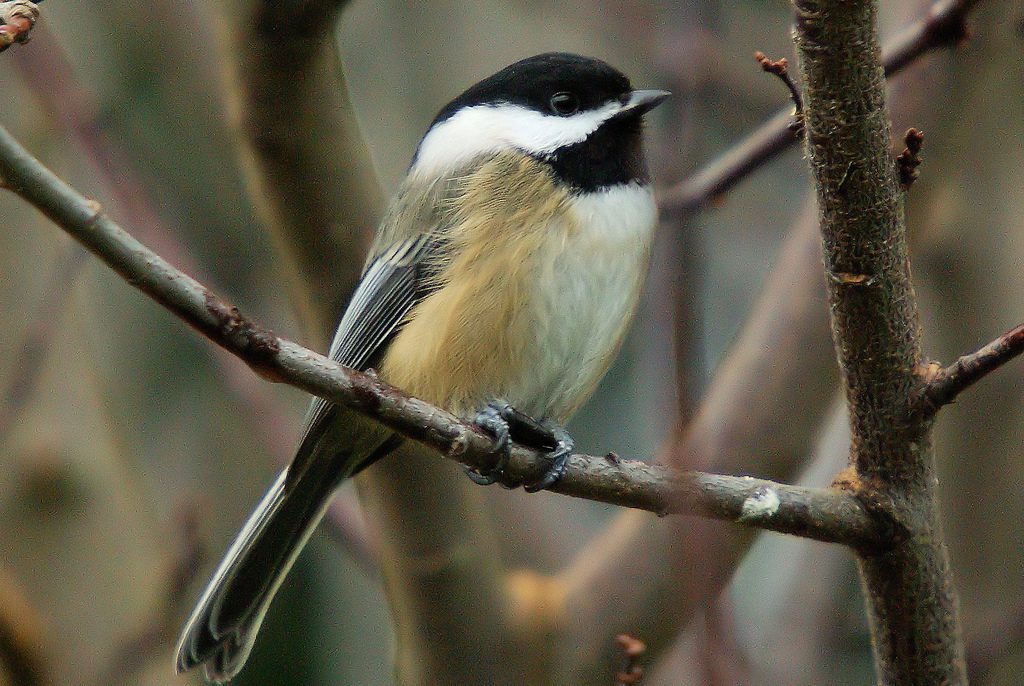 Photo ©
Bill Corwin
Photo ©
Bill Corwin
Black-capped Chickadee
Regional Species
A bird almost universally considered “cute” thanks to its oversized round head, tiny body, and curiosity about everything, including humans. The chickadee’s black cap and bib; white cheeks; gray back, wings, and tail; and whitish underside with buffy sides are distinctive. Its habit of investigating people and everything else in its home territory, and quickness to discover bird feeders, make it one of the first birds most people learn.
Range
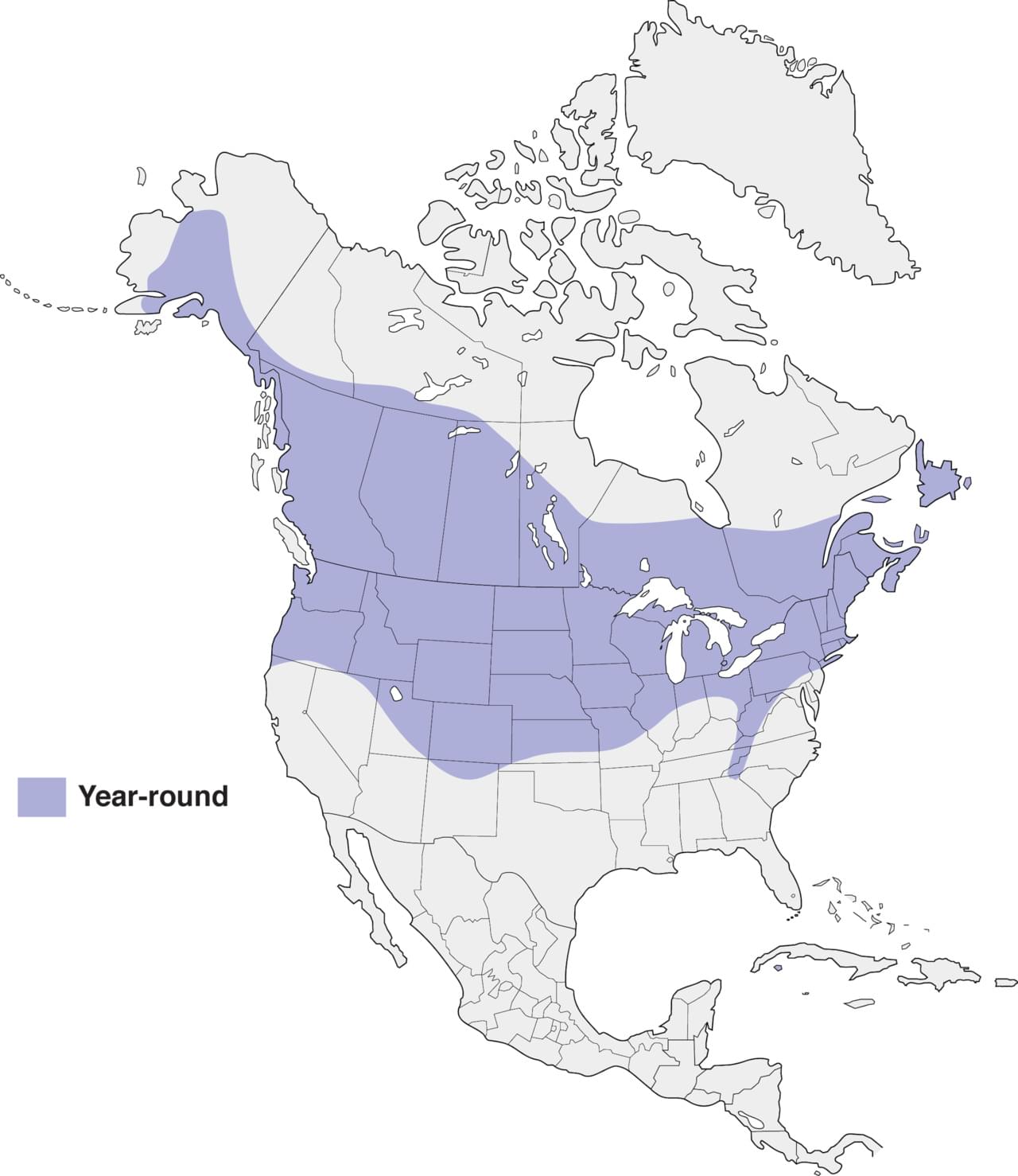
Habitat
Chickadees are found in deciduous and mixed forests, open woods, parks, willow thickets, cottonwood groves, and disturbed areas.
Food
In winter Black-capped Chickadees eat about half seeds, berries, and other plant matter, and half animal food (insects, spiders, suet, and sometimes fat and bits of meat from frozen carcasses). In spring, summer, and fall, insects, spiders, and other animal food make up 80-90 percent of their diet. At feeders they take mostly sunflower seeds, peanuts, suet, peanut butter, and mealworms. They peck a hole in the shell, and then chip out and eat tiny bits of seed while expanding the hole.
Behavior
Chickadees are active, acrobatic, curious, social birds that live in flocks, often associating with woodpeckers, nuthatches, warblers, vireos, and other small woodland species. They feed on insects and seeds, but seldom perch within several feet of one another while taking food or eating. Flocks have many calls with specific meanings, and they may contain some of the characteristics of human language.
Nesting
Both male and female chickadees excavate a cavity in a site usually selected by the female. Once the nest chamber is hollowed out (it averages 21 cm deep) the female builds the cup-shaped nest hidden within, using moss and other coarse material for the foundation and lining it with softer material such as rabbit fur.
Appearance
Typical Sound
© Jay McGowan | Macaulay Library
Size & Shape
This tiny bird has a short neck and large head, giving it a distinctive, rather spherical body shape. It also has a long, narrow tail and a short bill a bit thicker than a warbler’s but thinner than a finch’s.
Color Pattern
The cap and bib are black, the cheeks white, the back soft gray, the wing feathers gray edged with white, and the underparts soft buffy on the sides grading to white beneath. The cap extends down just beyond the black eyes, making the small eyes tricky to see.
Plumage Photos
Similar Species
Carolina Chickadees are the most similar to Black-capped Chickadees, but their ranges overlap in only a narrow zone across the north-central United States. They have less white wing-feather edging and longer songs than Black-capped Chickadees. Mountain Chickadees may be seen with Black-capped Chickadees in the West, but they have a sharp white stripe over the eye. Boreal Chickadees have a brown cap and back, and Chestnut-backed Chickadees have a rich brown back. White-breasted Nuthatch has a thicker shape, a shorter tail and longer beak, and a white throat. Spring male Blackpoll Warblers have the black cap and bib and white cheeks, but their back and sides are conspicuously streaked and their legs are yellow.
Did you know?!
- The Black-Capped Chickadee hides seeds and other food items to eat later. Each item is placed in a different spot and the chickadee can remember thousands of hiding places.
- Every autumn Black-capped Chickadees allow brain neurons containing old information to die, replacing them with new neurons so they can adapt to changes in their social flocks and environment even with their tiny brains.
- Chickadee calls are complex and language-like, communicating information on identity and recognition of other flocks as well as predator alarms and contact calls. The more dee notes in a “chickadee-dee-dee” call, the higher the threat level.
